When you collect a lead from Facebook Lead Ads, you need to make sure you’re routing it to the right places. You’ll probably want to send your lead’s information to your customer relationship management (CRM) platform, as well as keep a backup in a spreadsheet tool like Google Sheets.
You could do this manually—either by copying and pasting all of this information or by downloading and uploading CSV files—but those processes are inefficient and often lead to errors.
With Zapier, however, you can automate this process, ensuring your leads are added to the appropriate spreadsheet automatically. This way, you know no leads are slipping through the cracks. Follow these steps to learn how to connect Facebook Lead Ads to Google Sheets using Zapier.
New to Zapier? It’s workflow automation software that lets you focus on what matters. Combine user interfaces, data tables, and logic with 6,000+ apps to build and automate anything you can imagine. Sign up for free.
Before you begin
Create your Google Sheet
Log in to your Google Sheets account and create the Sheet that you’ll use to log the leads from your Facebook ad. Be sure that your Sheet has a frozen header row with clearly labeled columns.

You can read more about formatting Google Sheets to work with Zaps here.
Check Facebook Lead Ads permissions
You’ll need admin access for the Facebook page you want to use, the associated ad account, and access to leads. Learn more about setting up these permissions.
You’ll also need to create a form in Facebook Lead Ads and have at least one lead. If you don’t have a lead, you can create a sample lead with Facebook Lead Ads’ testing tool.
Finally, you’ll need to be on a Zapier paid plan or in your two-week trial to use Facebook Lead Ads in a Zap.
Connect Facebook Lead Ads to Google Sheets
There are a lot of ways to connect Facebook Lead Ads with Google Sheets. For this tutorial though, we’re going to focus on one specific workflow—adding new leads from Facebook Lead Ads as new rows in a Google Sheet. You can duplicate these same steps to connect Facebook Lead Ads and Google Sheets in other ways as well.
Zapier lets you create automated workflows—we call them Zaps—that send your information from one app to another. In this case, we’re transferring your lead’s information from Facebook over to Google Sheets. You can create a Zap from scratch, but we also offer quick templates to get you started.
To start with a template, click on the one template below, and you’ll be taken to the Zapier editor. You’ll also need to create a Zapier account if you don’t have one yet. Then, follow the directions below to set up your Zap.
Set up your Facebook Lead Ads trigger
To get started, choose Facebook Lead Ads as your trigger app and New Lead as your trigger event. Please note that you will need a paid Zapier account to use this app in a Zap.
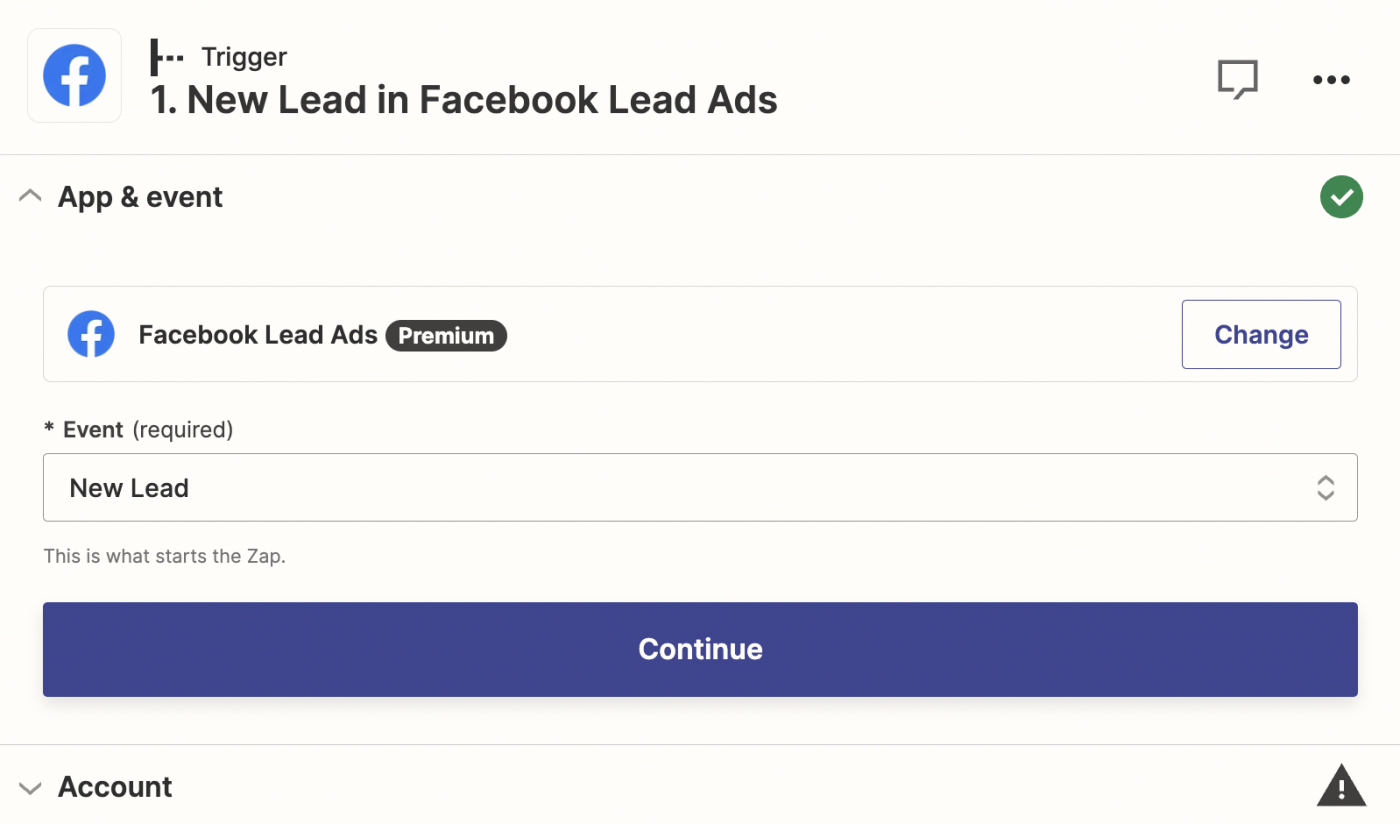
Click Continue. You will be asked to sign in to your Facebook account if you haven’t already. You will need to give Zapier access to some features on your Facebook account before proceeding.
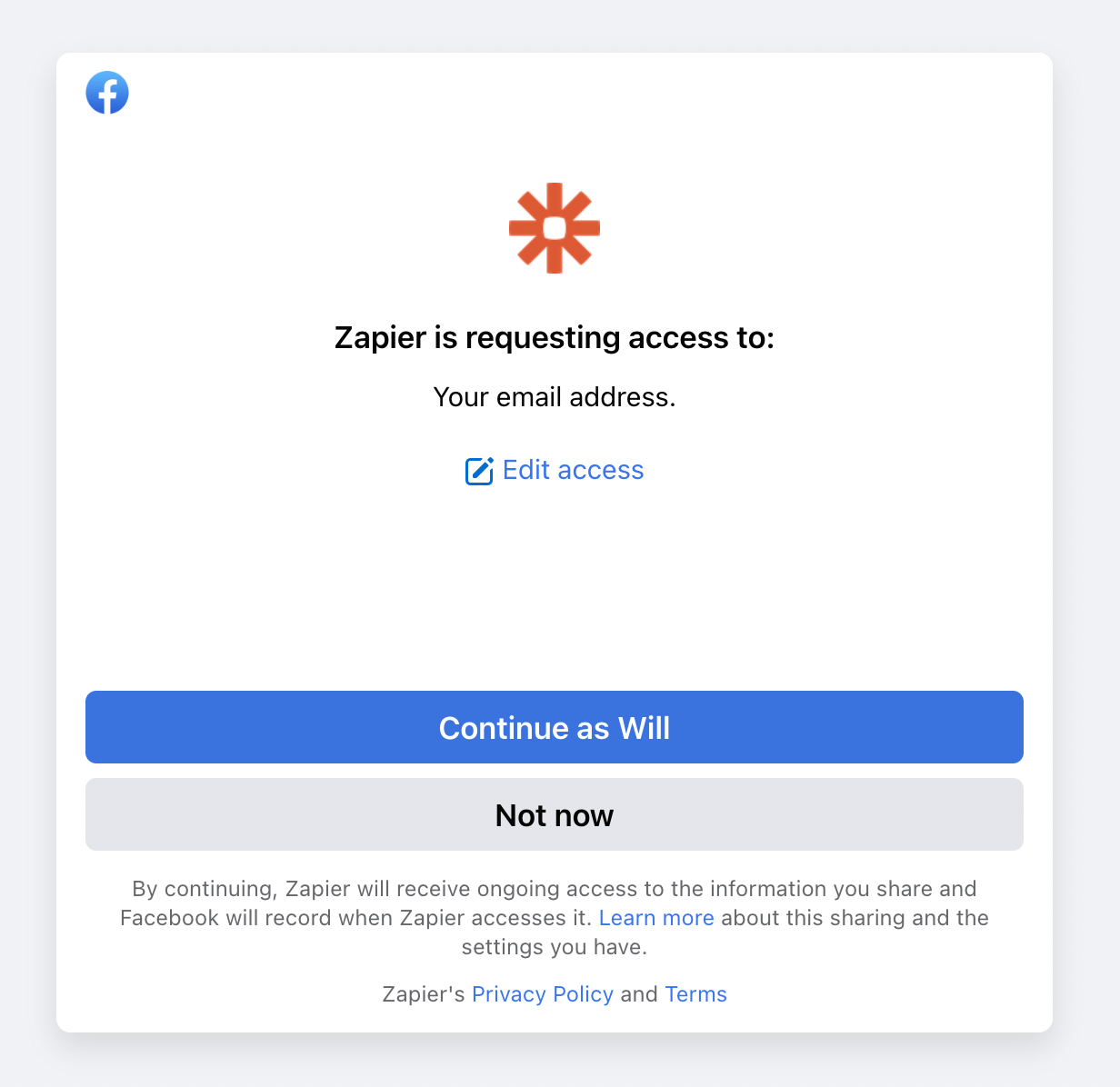
Click Continue to give permission, then customize your Zap trigger by selecting a Facebook page and form to use for this integration.
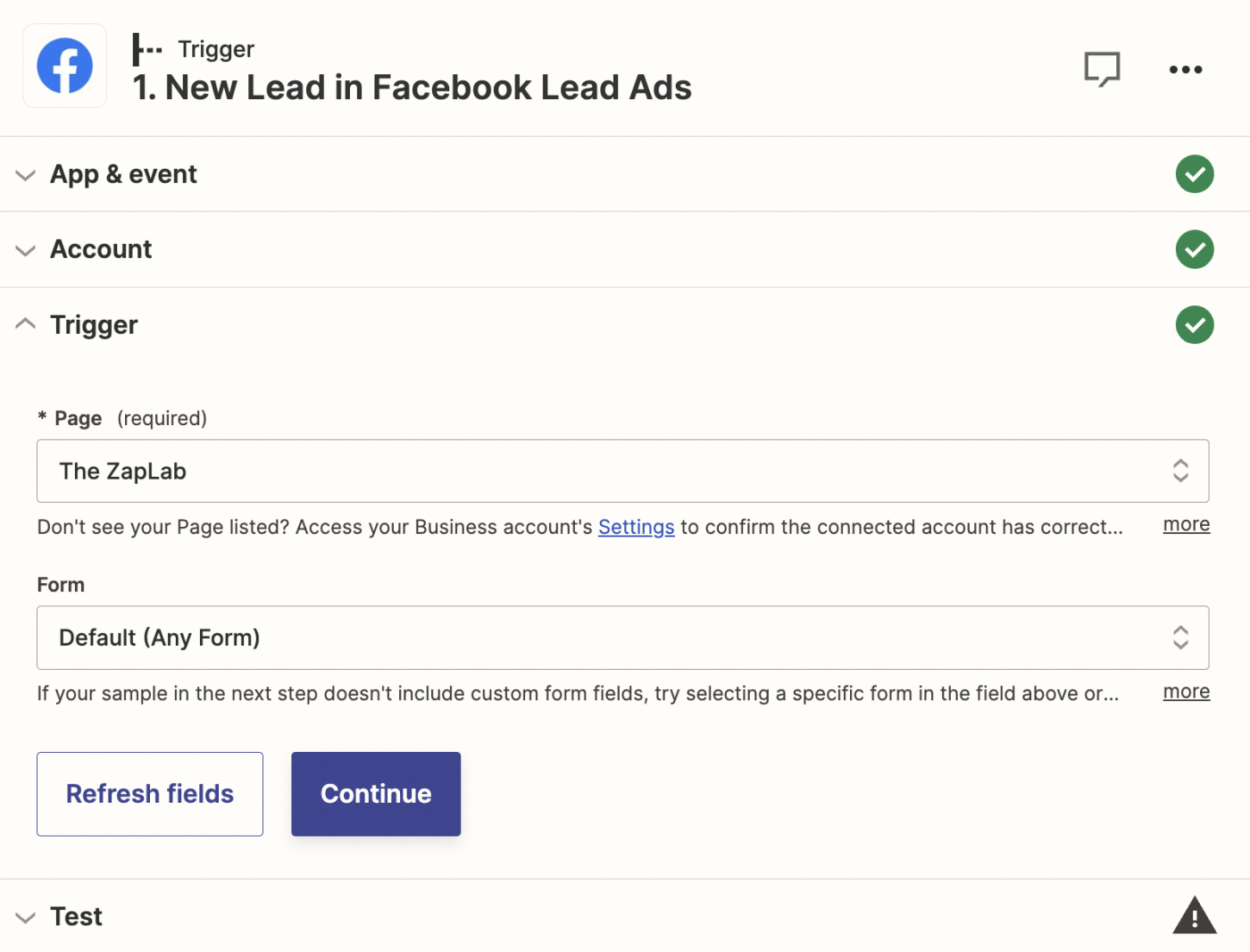
Once you’ve selected a page and form, click Continue. You’ll be prompted to test your trigger, which is always a good idea when setting up a new Zap. We’ll use this sample lead to set up the rest of our Zap.

Once you run a successful test, click Continue with selected record.
Set up your Google Sheets action
Now it’s time to set up the action for your Facebook Lead Ads trigger. Choose Google Sheets as your app and Create Spreadsheet Row as your action. Click Continue.
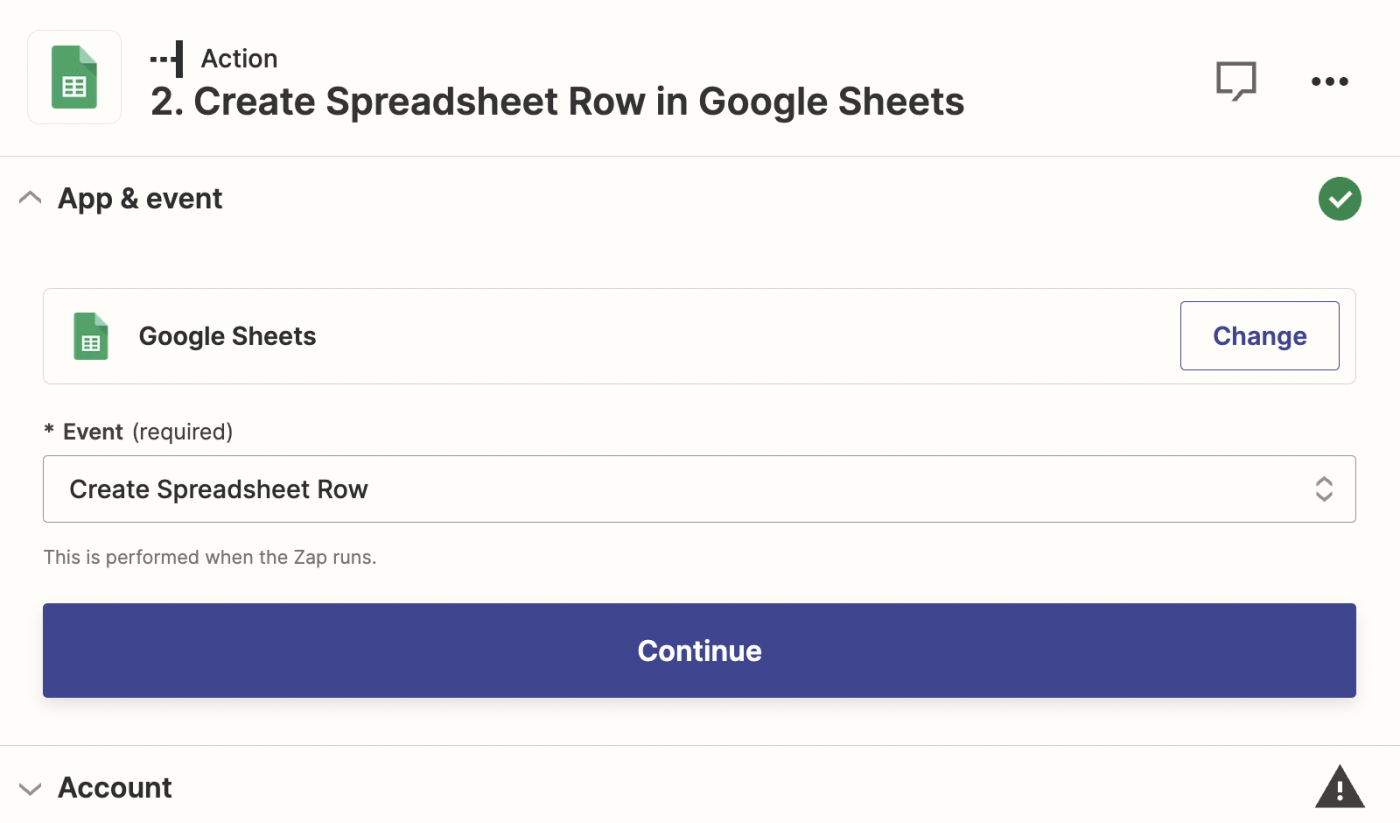
Next, sign in to your Google Sheets account. After you’ve signed in, you can select the Google Drive, spreadsheet, and worksheet you wish to use for this integration.
Once you’ve selected your worksheet, you’ll see your spreadsheet column names as individual fields.

If you decide to make any changes to your Sheet at this point, click the Refresh Fields button to update your options in this box.
Next, click inside your column fields. You’ll see the values from your Facebook Lead Ads trigger. You can type in text, which will appear the same each time your Zap runs. Or, you can select values from Facebook Lead Ads. When you begin using your Zap, real lead info from Facebook will populate your Google Sheet.
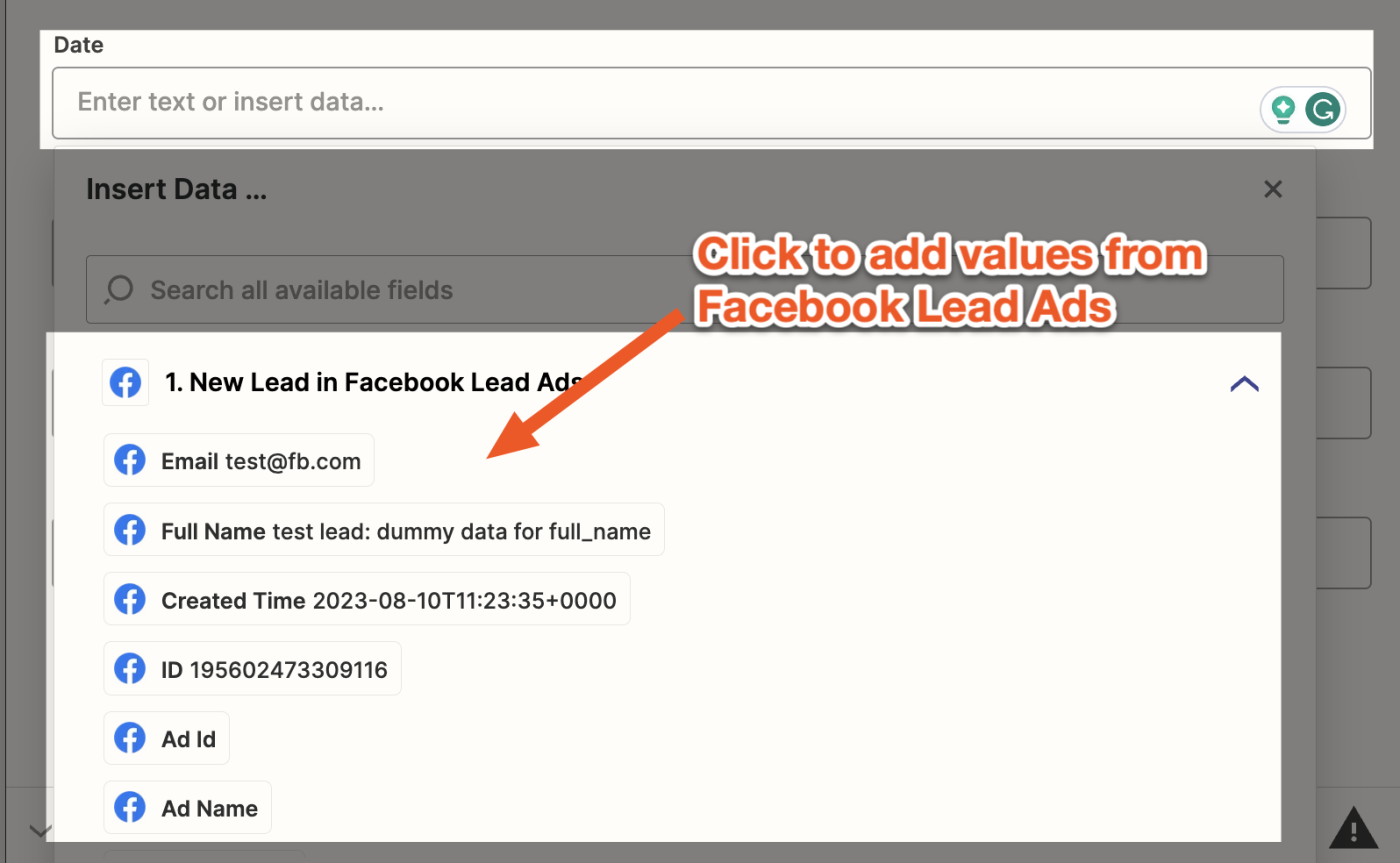
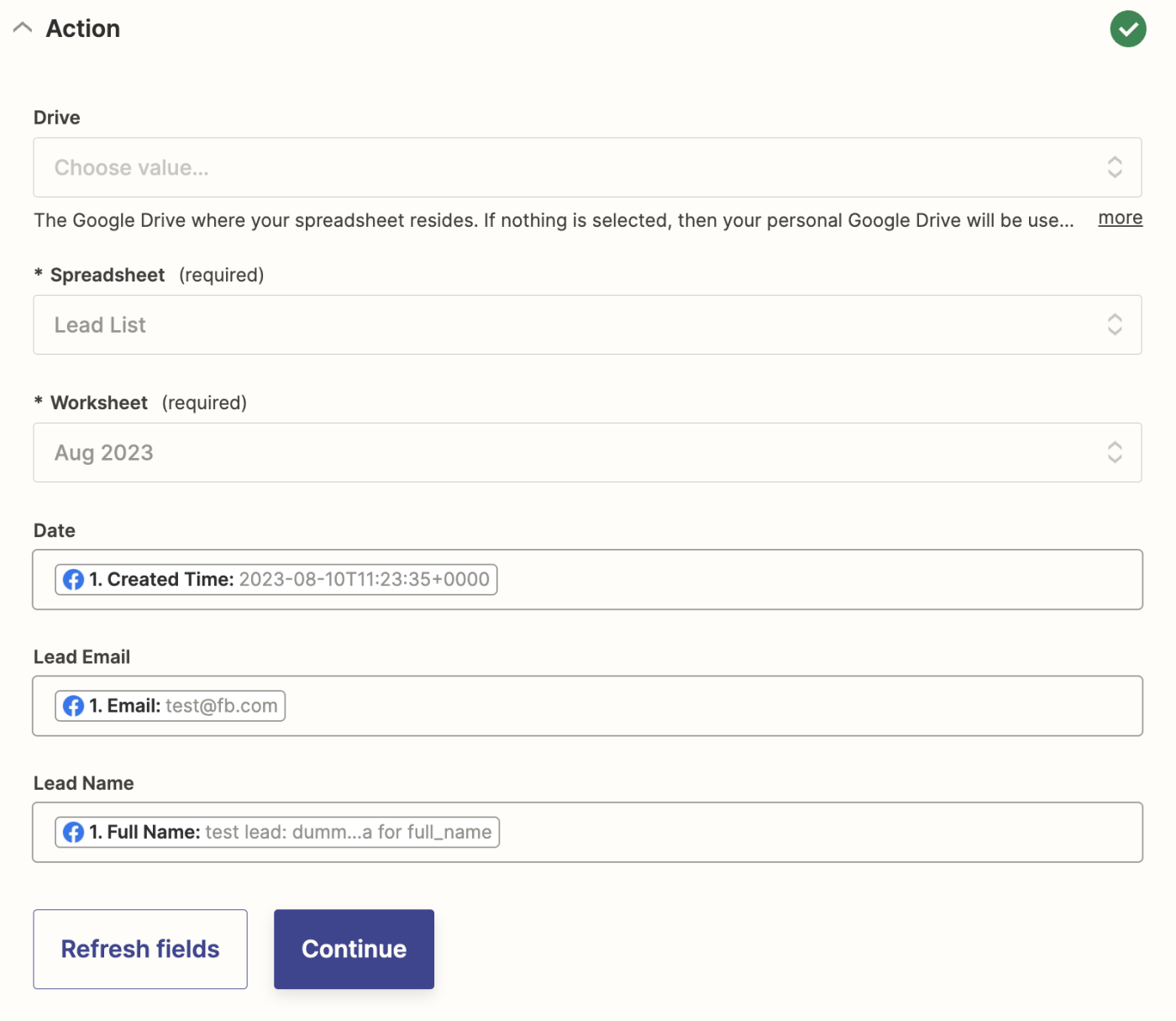
Once you’ve mapped all your spreadsheet fields, click Continue, and then test your Zap. This will create a new spreadsheet row in Google Sheets.
If your test is successful, you should see the data from your Facebook Lead Ad as a new spreadsheet row, according to how you configured it in the previous step.
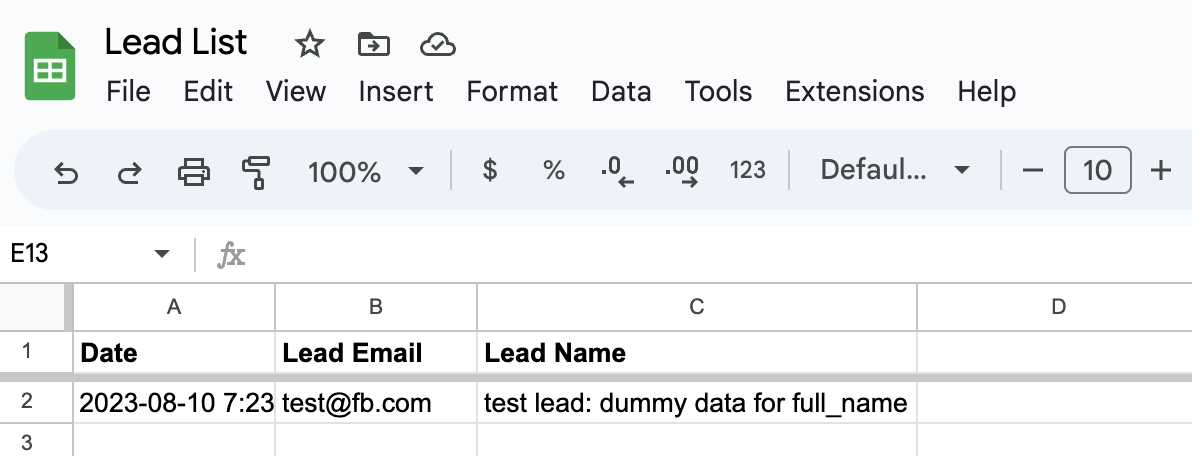
Learn more: Looking for more ways to download your leads from Facebook Lead Ads? Here’s how.
Do more with Facebook Lead Ads with multi-step Zaps
We don’t have to stop with one action, however. Multi-step Zaps allow you to perform many actions from a single trigger.
When to use multi-step Zaps:
-
When you need to send the same information to multiple places. For example, if you want to capture lead information in a spreadsheet, your CRM (Customer Relationship Management) tool, and send a notification to a team chat app.
-
When you need to manipulate or change trigger information before you pass it on to another action. For example, if you want to enrich lead data before logging it in your spreadsheet.
-
When you need your trigger event to kick off an entire workflow. For example, whenever you receive a new lead, your sales team starts their nurture process by automatically emailing the lead.Once everything is set up correctly, you’re ready to begin using your Zap.
And that’s all! From now on, all new leads from your Facebook Lead Ads account will be logged in your Google Sheet as a new row.
Multi-step Zaps—available on our paid plans—allow you to add multiple actions, filters, and even branching logic so you can do more, automatically. Learn how to use multi-step Zaps.
To create a multi-step Zap in the Zap editor, click on the plus sign where you’d like to add another step.
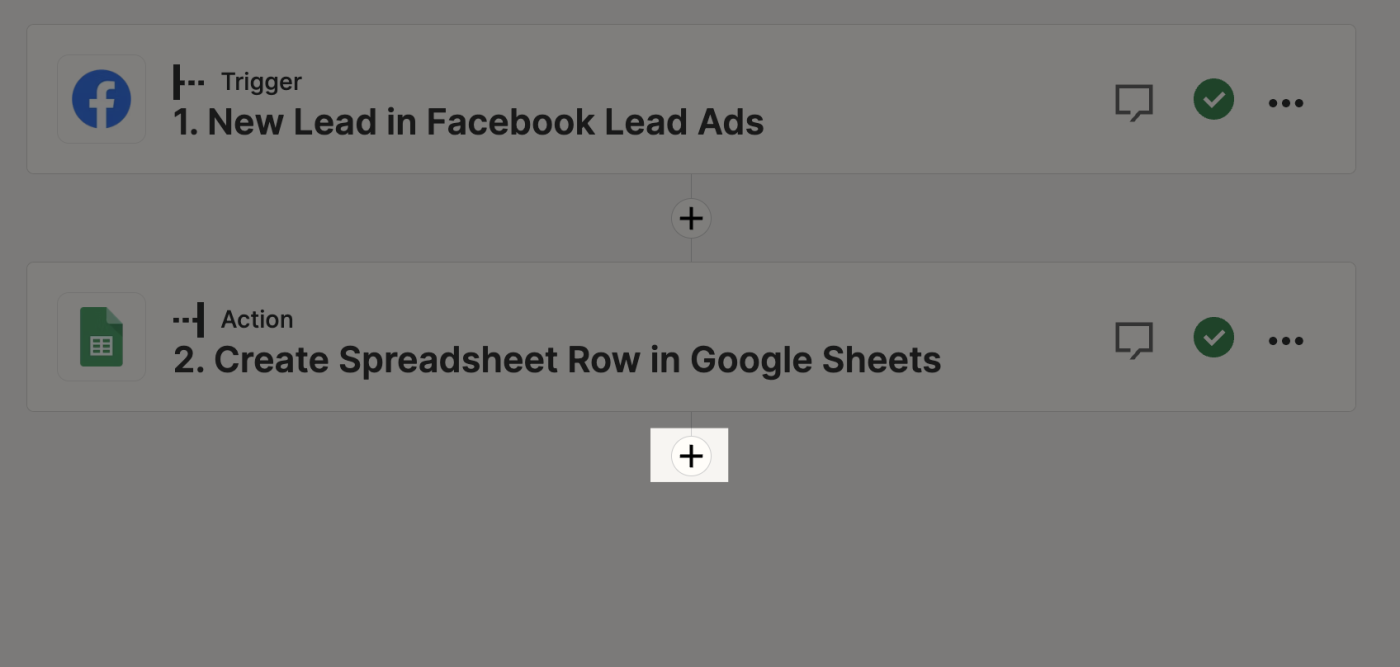
Notice how the window looks similar to the previous action we set up.
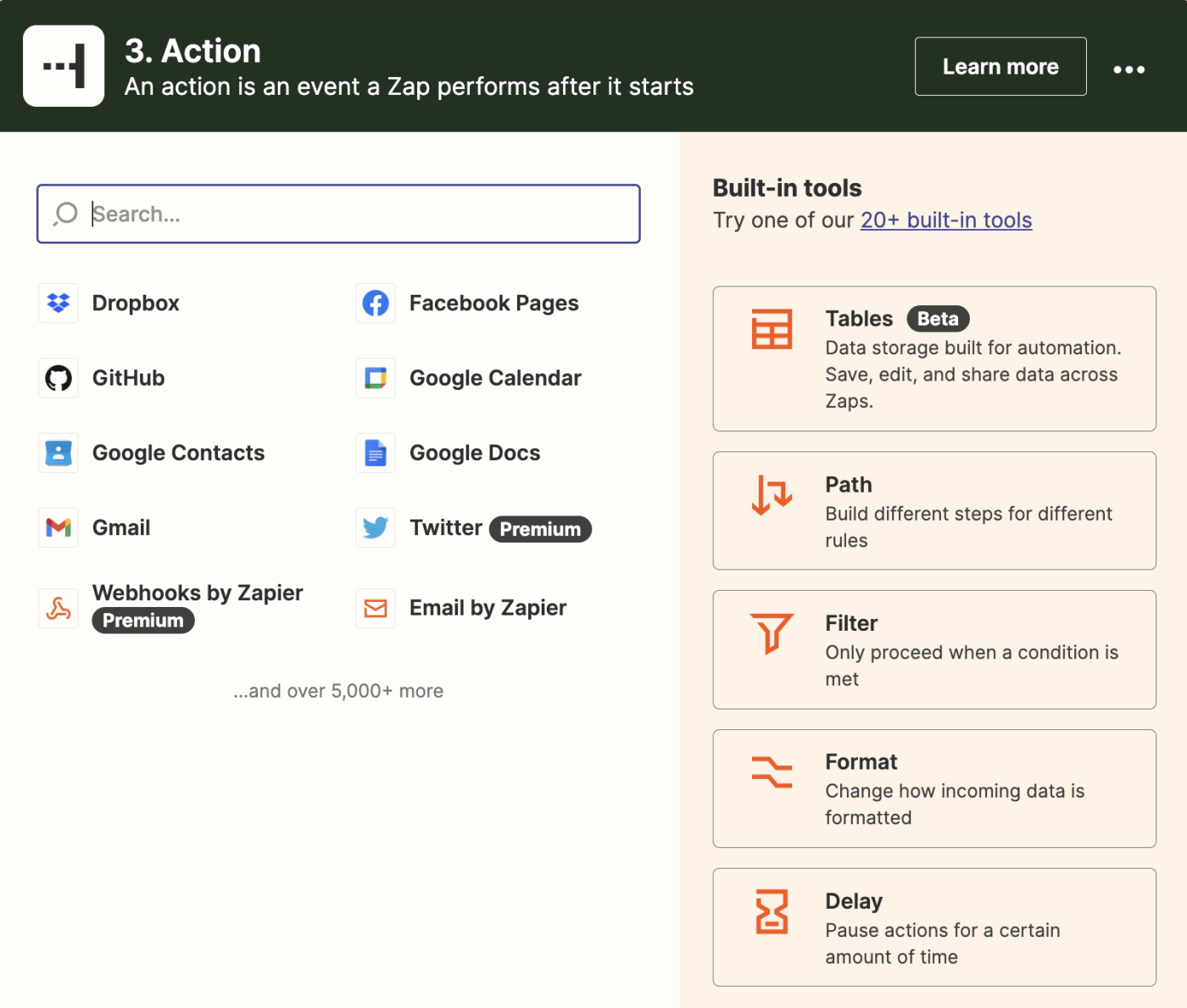
Set up your action and test it. Once you’ve added as many actions as you need, you’re ready to begin using your Zap.
Keep in mind that order matters with multi-step Zaps, especially if you need to use information from a previous Zap step. You can rename each step and add a description so it’s easier to understand what’s happening.
More ways to automate Facebook Lead Ads
If connecting Facebook Lead Ads to Google Sheets made life easier for you, check out some other helpful Zaps:
This article was originally published in July 2019 and was most recently updated in June 2024.